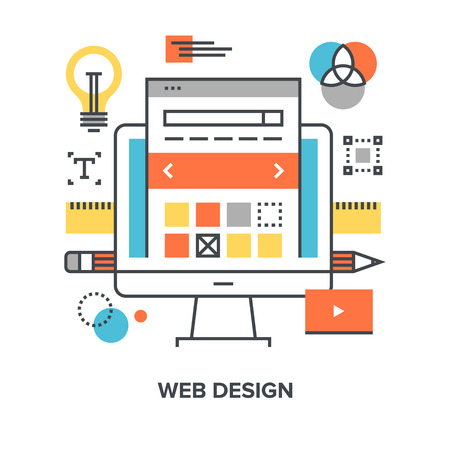1. Understanding the Indian Job Market for Design Professionals
The Indian job market is undergoing a remarkable transformation, especially in the field of design and digital innovation. With rapid urbanisation and a tech-driven economy, cities like Bengaluru, Hyderabad, and Pune have emerged as hotspots for design professionals. These metropolitan hubs are not only nurturing startups but also attracting global IT giants, all of whom require cutting-edge design expertise.
Across sectors such as Information Technology, Automobile, Consumer Electronics, and Real Estate, the demand for skilled designers who can master industry-standard software—like AutoCAD, Adobe Creative Suite, SolidWorks, and SketchUp—is on a steep rise. From UI/UX to architectural and industrial design, proficiency in these tools is now seen as a basic requirement rather than an added advantage.
Employers in India are increasingly prioritising candidates who demonstrate hands-on experience with advanced design software. This shift reflects a broader trend: companies seek talent that can deliver innovative solutions quickly and efficiently, supporting both local projects and international collaborations. As a result, mastering design software has become crucial for professionals aiming to secure lucrative roles and advance their careers in India’s vibrant job market.
2. Top Design Software Used by Indian Companies
In the rapidly evolving landscape of Indian businesses, proficiency in key design software is a fundamental asset for career growth and increased salary potential. Indian industries, ranging from manufacturing to IT and creative agencies, have distinct preferences for certain design tools that align with both global standards and local requirements. Mastering these platforms not only boosts employability but also aligns your skillset with the needs of top employers across the nation.
Essential Design Software in India
| Software | Primary Use | Industry Relevance in India |
|---|---|---|
| AutoCAD | 2D/3D drafting and modeling | Civil engineering, architecture, infrastructure development |
| SolidWorks | 3D mechanical design and simulation | Automotive, aerospace, heavy machinery manufacturing |
| Adobe Creative Suite (Photoshop, Illustrator, InDesign) | Graphic design, digital marketing, publishing | Advertising agencies, branding studios, media companies |
| TinkerCAD & Fusion 360 | Entry-level 3D design & advanced cloud-based CAD/CAM | Educational institutes, startups, product design firms |
Locally Popular Tools and Trends
Apart from international software giants, several tools have gained traction specifically within India’s design and engineering ecosystem. For example, CATIA and NX are widely used by automotive leaders like Tata Motors and Mahindra. Similarly, BricsCAD is growing in popularity due to its cost-effectiveness for SMEs. Additionally, indigenous solutions such as CADD Centre’s proprietary tools are often integrated into training programs across major Indian cities.
Why These Tools Matter for Your Career in India
The demand for skilled professionals proficient in these platforms is consistently high. Recruitment ads from Indian conglomerates like L&T, Reliance Industries, and Infosys frequently list expertise in AutoCAD or SolidWorks as a mandatory requirement. Meanwhile, creative roles at agencies in Mumbai or Bengaluru almost always expect hands-on experience with Adobe Creative Suite. Mastering these tools not only makes you job-ready but also positions you for higher salaries and faster promotions.

3. Skill Upgradation: Training Resources & Certification Options in India
To become a true master of design software and boost your career growth in India, continuous skill upgradation is vital. The Indian ed-tech ecosystem offers a wide range of resources tailored for aspiring designers and professionals seeking to upskill. Below, we explore popular training institutes, online courses, and industry-recognised certification pathways that are shaping India’s design workforce.
Renowned Indian Training Institutes
India is home to prestigious institutions like National Institute of Design (NID), Industrial Design Centre (IDC) at IIT Bombay, and Srishti Institute of Art, Design & Technology. These institutes offer both foundational and advanced courses in design software such as AutoCAD, Adobe Creative Suite, Rhino, and SolidWorks. Their curriculum is often aligned with the needs of the Indian market and global standards, ensuring you are industry-ready.
Popular Online Courses in India
The digital learning revolution has made quality education accessible across India—from metros to tier-2 cities. Platforms like Udemy India, CoursEra, NPTEL, and Skill-Lync offer specialised courses on tools like SketchUp, Revit, Fusion 360, CorelDRAW, and more. Many of these platforms provide content in English as well as regional languages like Hindi, Tamil, or Telugu—making learning more inclusive and relatable for Indian learners.
Indian Ed-Tech Startups Making an Impact
Startups such as upGrad, Great Learning, and Unacademy have partnered with leading companies and universities to deliver design software modules relevant to the evolving job market. Their mentorship-driven approach ensures learners receive practical insights from experienced Indian professionals.
Industry-Recognised Certification Pathways
Earning a certification is a strategic move for career advancement in India’s competitive job landscape. Global certifications from providers like Autodesk Certified Professional, Adobe Certified Expert (ACE), or Bentley Institute Certifications are highly valued by Indian employers—especially in architecture, engineering, interior design, and media sectors. Additionally, local bodies like the CADD Centre Training Services offer industry-endorsed credentials that carry significant weight within India’s corporate network.
The Indian Advantage: Community & Peer Learning
Beyond formal training, India’s vibrant online communities—on WhatsApp groups, Telegram channels, or LinkedIn networks—enable peer-to-peer learning and sharing of best practices tailored to the Indian context. This collaborative spirit helps professionals stay updated with the latest trends and software updates relevant for “Make in India” ambitions.
Pursuing the right mix of institutional learning, online coursework, certifications, and community engagement will empower you to master design software efficiently—opening doors to higher salaries and dynamic roles across India’s booming industries.
4. Real-Life Success Stories: Indians Who Transformed Their Careers
India is home to countless professionals who have reshaped their careers and financial prospects by mastering design software. From the bustling streets of Mumbai to the emerging tech hubs of Coimbatore and Indore, these success stories are a testament to the transformative power of digital skills. Let’s explore how individuals from diverse backgrounds leveraged design software to achieve remarkable career growth.
From Tier-Two Cities to Metro Giants
Many aspirants from tier-two cities in India often feel overshadowed by their metropolitan counterparts. However, design software mastery has become a great equaliser. Consider Priya Sharma from Lucknow, who started as a junior graphic designer earning ₹18,000 per month. After dedicating herself to learning advanced features in Adobe Illustrator and AutoCAD through online courses, she landed a job in a Bengaluru-based MNC with a salary package of ₹7 lakhs per annum.
Success Comparison Table: Before & After Mastery
| Name | City | Previous Role & Salary | Software Mastered | Current Role & Salary |
|---|---|---|---|---|
| Priya Sharma | Lucknow | Junior Designer ₹18,000/month |
Adobe Illustrator, AutoCAD | Senior Designer (Bangalore) ₹58,000/month |
| Ankit Raj | Pune | Civil Draughtsman ₹22,000/month |
Revit, SketchUp | BIM Engineer ₹68,000/month |
| Sneha Menon | Kochi | Freelancer ₹12,000/month |
Photoshop, Figma | UI/UX Lead (Chennai) ₹80,000/month |
The Ripple Effect: Uplifting Communities & Industries
The impact goes beyond individual gains. When professionals from smaller cities gain expertise in design software, they bring global best practices back to their hometowns. This not only boosts their own earnings but also elevates local industries—be it real estate, advertising, or textiles—by introducing cutting-edge digital workflows. For example, Ankit Raj from Pune helped his family’s construction business adopt Building Information Modeling (BIM), leading to more efficient project delivery and higher client satisfaction.
Key Takeaways for Indian Aspirants:
- Your location is no longer a limitation: Design software skills are recognised across India and internationally.
- Diverse opportunities await: From freelance gigs to leadership roles in top MNCs.
- Lifelong learning pays off: Consistent upskilling can lead to exponential salary hikes and professional respect.
If you’re looking to advance your career and increase your earning potential in India’s competitive job market, take inspiration from these stories and make mastering design software your next strategic move!
5. Salary Boost: How Design Software Expertise Impacts Your Pay Package
In the rapidly evolving Indian job market, mastery over design software is a surefire way to unlock lucrative opportunities and enhance your professional value. As industries such as architecture, engineering, IT, media, and product development increasingly integrate advanced design tools into their workflows, employers place a premium on candidates skilled in platforms like AutoCAD, Adobe Creative Suite, SolidWorks, and Revit.
Salary Trends for Design Professionals in India
According to recent Naukri.com and Glassdoor data, professionals with advanced design software skills command salaries that are 25-40% higher than their peers with basic or no software expertise. For example, a fresher architect in Bengaluru or Mumbai earns an average of ₹3.5-4.5 LPA (Lakhs per annum) without specialized skills, but those proficient in BIM or 3D rendering tools can secure packages upwards of ₹6-7 LPA. Mid-level designers and engineers see even steeper jumps—often crossing the ₹12-18 LPA range if they possess certifications in trending design software.
Bonuses and Perks: The Added Value
Indian companies are also offering performance bonuses and special allowances for professionals who demonstrate efficiency and innovation through their software proficiency. IT consultancies and MNCs in Hyderabad, Pune, and Gurugram frequently reward digital design experts with annual bonuses ranging from 10% to 20% of their base pay, reflecting the tangible impact these skills have on project outcomes.
Better Job Roles & Fast-Track Promotions
Mastering industry-standard software not only boosts your CTC (Cost-to-Company) but also opens doors to senior roles such as Design Lead, UX Manager, and Project Architect at a much faster pace. Recruiters across India’s major metros actively seek out portfolios demonstrating hands-on expertise with the latest tools—making you a preferred candidate for leadership tracks.
In summary, investing time and effort into mastering design software isn’t just about technical growth—it’s a strategic career move that directly translates into higher salary packages, attractive bonuses, and swift professional advancement across India’s dynamic industries.
6. Cultural Adaptation: Indian Work Culture and Remote Collaboration
In today’s rapidly evolving Indian job market, mastering design software is more than a technical achievement—it’s a strategic asset for navigating India’s multicultural, hybrid workplaces. As organizations across India embrace digital transformation, the demand for professionals adept at using advanced design tools like AutoCAD, SolidWorks, or Adobe Creative Suite has surged. However, it’s not just about technical prowess; it’s about blending these skills with a deep understanding of Indian work culture and effective collaboration across diverse teams.
Embracing Diversity in Indian Workplaces
India’s work environments are uniquely diverse, comprising team members from various states, linguistic backgrounds, and cultural traditions. Mastery of design software helps professionals standardize workflows, ensuring everyone is on the same page despite linguistic or regional differences. By using universally recognized design standards and file formats, you minimize miscommunication—a common challenge in pan-Indian projects—and foster a sense of shared purpose among team members.
Boosting Remote Collaboration
The rise of remote and hybrid work models in India has further highlighted the need for seamless collaboration tools. Design software with cloud-based features allows real-time sharing, co-editing, and instant feedback—crucial in bridging geographical distances from Mumbai to Bengaluru to smaller cities like Kochi or Indore. This adaptability not only accelerates project timelines but also empowers teams to leverage talent from across the country without location barriers.
Cultural Sensitivity Through Design
Designing for India means considering local aesthetics, customer preferences, and even region-specific regulatory requirements. Proficiency in design software enables professionals to quickly adapt their outputs to suit different markets within India—whether creating packaging designs for North India or architectural plans adhering to South Indian norms. This flexibility gives you a distinct edge in client satisfaction and career progression.
Building Trust and Professional Growth
Collaboration isn’t only about technology; it’s about building trust within culturally varied teams. Being skilled in industry-standard software demonstrates professionalism and commitment to quality, earning respect from colleagues and clients alike. Moreover, your ability to facilitate smooth project delivery across diverse groups positions you as a valuable team player—essential for leadership roles and salary growth in competitive Indian industries.
Ultimately, mastering design software is your gateway to thriving in India’s dynamic professional landscape. It equips you to bridge cultural divides, excel in hybrid settings, and contribute meaningfully to India’s vibrant economy—boosting both your career trajectory and earning potential.


